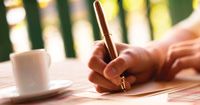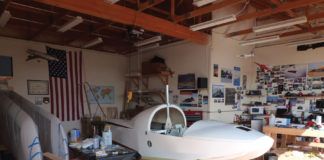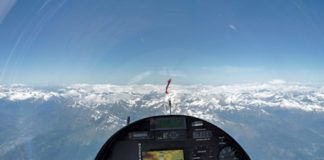Earlier this year, the National Transportation Safety Board took a close look at Experimental aircraft and came up with some recommendations. It really didn’t focus on the category of gyroplanes. However, it did publish a “Safety Study on Experimental Amateur-Built (E-AB) Aircraft,” and that is currently how 100% of the commercially available gyroplanes in the U.S. are made available to consumers. This contrasts with Europe, where the numbers are almost completely reversed: Nearly 100% of the commercially available gyroplanes there are factory built, not owner built or Experimental. In fact, the reality about gyroplanes is that in order for a European gyroplane to be made available in the U.S. market, it has to be partially “demanufactured.” That is, a gyroplane manufacturer who has designed an aircraft, created and documented the production process, maintains quality control for production and has a testing program for that gyroplane, cannot simply sell that proven product in the U.S. like other Light Sport Aircraft manufacturers do. Instead, the manufacturer has to design a kit version that leaves at least 51% of the assembly and fabrication to the buyer.
The larger point is that this situation for gyroplanes in the U.S. makes recommendations for the amateur-built process something that all domestic manufacturers, importers, instructors and prospective owners should pay attention to.
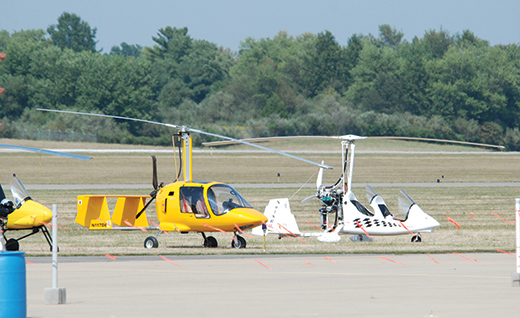
Even though the primary focus of the NTSB report was on Experimental/Amateur-Built airplanes, gyroplane owner/builders and companies should take heed.
Applicability
For much of the light aircraft world, E-AB is just another set of initials. Ultralight aircraft don’t have to worry about certification at all. Powered parachutes and weight-shift-control trikes are almost exclusively certificated as either Experimental Light Sport Aircraft (ELSA) or Special Light Sport Aircraft (SLSA).
However, there are a lot of domestic airplane manufacturers who are building single- and two-place aircraft that fit comfortably within the specifications of Light Sport, but who have chosen to offer their aircraft as amateur-built kits either exclusively or as an option for customers. And domestic gyroplane producers are operating under the same limitations as overseas manufacturers, so 100% of their product offerings are E-AB.
But E-AB covers a lot of aircraft ground, and sport aircraft are just a small state in a big country. The reality is that far from concentrating on gyroplanes or even the entire realm of sport aviation, the focus was on what the NTSB knows best: airplanes. And it seems that because the center of attention was accidents, fatal and otherwise, the emphasis was on more complex aircraft.
That said, a lot of airplane safety issues are also gyroplane safety issues. However, where Experimental airplane owners are often more concerned with transition training, Experimental gyroplane owners are just as likely to need primary training in their category. This means that things that help airplane owners a little probably will help gyroplane owners a lot. It also means extra burdens that could make matters a little more difficult for airplane owners could become serious burdens for gyroplane owner/builders.
16 Conclusions, 16 Recommendations
The NTSB noted that E-AB aircraft “represent nearly 10% of the U.S. general aviation fleet, but these aircraft accounted for approximately 15% of the total and 21% of the fatal U.S. general aviation (GA) accidents in 2011.” When this was written, the full report hadn’t been published, so it wasn’t known how many gyroplane industry people were contacted for this study. But because the recommendations will probably apply to all categories, it may not make that much difference.
The conclusions came down to aircraft-testing issues, piloting (training) issues and documentation issues. Frankly, the documentation issues appear on the surface to be an attempt to create much more of a paperwork burden. The documents that the NTSB thinks would be dandy, would be. But it takes effort and time to produce such documents, effort and time that may be more productively spent doing other things, even if those other things include watching quality sunsets at the airport after a day of building or flying.
Space limitations preclude talking about all 16 recommendations, so we will focus here on the recommendations that can either help or hurt the gyroplane group.
The Good
A lot of the study’s conclusions point to a major deficiency in the way the Experimental world works for gyroplanes. The study emphasized that flight testing an aircraft is a challenging task. It said that test pilots should not just be experienced pilots; they should also be trained in how to perform test-pilot tasks. However, the report also points out that the person often doing the test flying may have little to no experience in the type of aircraft being flown.
The NTSB says its study data “suggest that pilots who did not seek training were overrepresented in the accidents, and that E-AB aircraft accidents involving loss of aircraft control could be reduced if more pilots received transition training.” This conclusion is helpful, even if not altogether accurate. Seeking training is not going to prevent an accident—obtaining training will. Many owner/builders don’t do a lot of seeking in the first place because they have already found that the needed training is difficult to get. The good news is that the NTSB partially addresses that.
The NTSB seems to understand that the key to training issues is to enable more flight instructors to train in the appropriate aircraft. The rub is that the most appropriate aircraft for the needed training are also certified as Experimental. And §91.319(a)(2) of the FARs says, “No person may operate an aircraft that has an experimental certificate carrying persons or property for compensation or hire.” The exception is allowed for in the same general regulation, §91.319(h): “The FAA may issue deviation authority providing relief from the provisions of paragraph (a) of this section for the purpose of conducting flight training. The FAA will issue this deviation authority as a letter of deviation authority.”
Paragraph (h) then becomes very important because it is one of the few ways training can be accomplished in Experimental aircraft. The Letter of Deviation Authority (LODA) allows instructors who are willing to use their own Experimental aircraft for training to do so. The problem is that issuing a LODA is not something that all FAA flight standards district offices (FSDOs) know how to do or want to do. And when they don’t know a lot about it, they may not be helpful to the instructors in their districts.
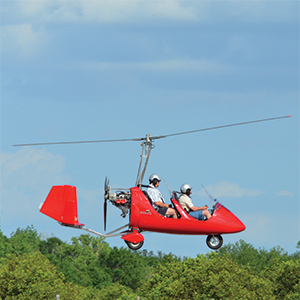
The NTSB’s recommendation here is for the FAA to “Develop and publish an advisory circular, or similar guidance, for the issuance of a Letter of Deviation Authority to conduct flight instruction in an experimental aircraft, to include sample documentation and exemplar training materials.” This is something many people in the industry have been wanting for years. As it is, instructors look for model submission packages from other instructors. However, there are problems with this method. There have been no standards for applications, so what works in one FSDO doesn’t always work in another. Creating overall FAA guidance and standards will make everyone’s job a lot easier.
The next recommendation is for the FAA to publish lists of instructors who are using LODAs. Actually, it would be nice if the FAA would publish lists of instructors, period! It is difficult to find instructors for specialties like powered parachute, gyroplane and weight-shift-control aircraft. Lists of instructors using LODAs for specific aircraft are just additional sub-categories of flight instructors that should be publicized by the organization that emphasizes safety.
This next item is a recommendation for both the FAA and the EAA and is, in my opinion, somewhat silly. (Yes, this one recommendation is actually two recommendations of the 16.) “Complete planned action to create a coalition of kit manufacturers, type clubs, and pilot and owner groups and (1) develop transition training resources and (2) identify and apply incentives to encourage both builders of experimental amateur-built aircraft and purchasers of used experimental amateur-built aircraft to complete the training that is developed.”
The idea that the EAA has the resources to provide incentives to builders and owners of aircraft to get training is a little far-fetched. And I’m not sure what kind of incentives the FAA should be providing because the NTSB hasn’t told us. But let’s try solving this problem in a tried-and-true fashion instead. It doesn’t make sense to provide incentives to obtain things that often aren’t available; it makes more sense to first make the things available. So if you want to provide an incentive, provide it to the instructors who could offer the critical instruction. And what better incentive is there than the ability to make a living? Providing the ability to make a living doesn’t cost the FAA a penny. How do we do that? Well, if LODAs could be used for primary training, flight reviews and other kinds of training instead of being limited to transition training, that by itself might make it worth the hassle for instructors to apply for and maintain a LODA. In fact, that is what has happened in the gyroplane world already, and I haven’t heard of any accidents or incidents because of that latitude being given to instructors. This could work for other aircraft categories too. So really, instead of providing incentives, the FAA could just get out of the way.
The Bad
Of the 12 recommendations to the FAA, five of them were for changes in regulations or FAA orders to mandate increases in reports, plans and documentation from aircraft owner/builders to the FAA. The NTSB seems to believe that increasing the paperwork associated with an aircraft offers some increase in safety. This is actually something I can understand from their point of view because during a study, they probably look at reports, forms, plans and such. I doubt that any actual Experimental/Amateur-Built aircraft were inspected during the study, but I could be wrong. Still, increasing reporting requirements seems like a Dilbertish approach to safety. Real-world solutions to safety involve education, appropriate training and realistic testing, not more reports to the government.
The Not-Quite-on Target
One recommendation looks like it may be just what the gyroplane doctor ordered. One of the problems with pilots wanting to fly gyroplanes is how to get a Phase I flight test completed while not yet being qualified to fly the gyroplane. Forty hours of testing is a lot of flying to hire someone else to do, if a pilot is even available to do it. I’m sure new owners would like to do the flying themselves, but it normally isn’t legal to do so. So that means the problem is getting legal, right? Well, maybe. But a lot of instructors will not allow students to fly their training aircraft out for the solo time required for the license. Sometimes it is an insurance issue. It certainly is a financial issue, because it is illegal to rent Experimental aircraft to students working on license requirements. But sometimes an instructor just doesn’t want to send his one-and-only gyroplane into the sky while he’s watching from the ground.
The NTSB rides to the rescue with this recommendation:
“Revise Federal Aviation Administration Order 8130.2G, and related guidance and regulations, as necessary, to clarify those circumstances in which a second qualified pilot could be authorized to assist in the performance of flight tests when specified in the flight test plan and Phase I operating limitations.”
This recommendation makes sense. The certified flight instructor can perform a basic solo test flight. If he finds the aircraft satisfactory, then he can begin taking the student along for flight training while simultaneously completing the Phase I flight-test requirements. When the student is ready for solo, he can continue to fly a gyroplane that he has been training in and is used to flying. Perfect!
Well, maybe not, because in the “Conclusions” portion of the same report, we learn the NTSB’s real intent:
“The safety of E-AB aircraft flight testing could be improved for some pilots and flight test circumstances if a qualified second pilot was authorized to accompany the pilot for the purpose of flight testing and not training.”
That is why the NTSB is close on this one, but doesn’t quite earn the Kewpie doll.
The Missing
One item that is missing from the NTSB report is a review of the one-size-fits-all Phase I flight-test period. It has always seemed unusual that the most simple amateur-built aircraft are required to fly the same number of flight-test hours as the most complex aircraft. Moreover, requiring 40 hours of test flight time while similar aircraft certified as ELSA require only 5 hours seems wrong by a factor of eight. Even amateur-built powered parachutes are required to fly 40 hours in Phase I. That is simply ludicrous for simple aircraft.
There is another piece missing from the report from the gyroplane point of view. As mentioned, the FAA in effect forces all gyroplane sellers to sell aircraft as E-AB kits, despite the fact that the same gyroplanes are offered in other parts of the world as complete, ready-to-fly aircraft. A recommendation to the FAA to get the Rotorcraft Directorate to provide for SLSA gyroplanes would likely end up growing the sport and attracting more instructors to the industry. The industry has been doing its part to make this happen, but the goal posts seem to keep moving.
This is obliquely referred to in a number of the conclusions from the NTSB. For example, the report points out, “The E-AB aircraft safety record could be improved by providing pilots with additional training resources to safely perform Phase I test pilot functions.” As it is, the FAA needs to determine what the safe tests are for gyroplanes so that pilots can adequately perform them. Industry started the process, in the form of ASTM committee work, but lack of engagement from the FAA has shut down those efforts.
One of the problems for gyroplanes is that it is difficult to justify to an insurance company that you want to use an E-AB-certified aircraft for a trainer. Insurance companies understand less about gyroplanes than the regulators. When the FAA doesn’t offer a path to SLSA status for gyroplanes, while it does offer that path to the relatively new kids on the block—weight-shift-control trikes and powered parachutes—it makes things even more difficult for gyroplane instructors. And when you make things difficult for instructors, you get far fewer willing to instruct. That ultimately impacts the safety of the sport.
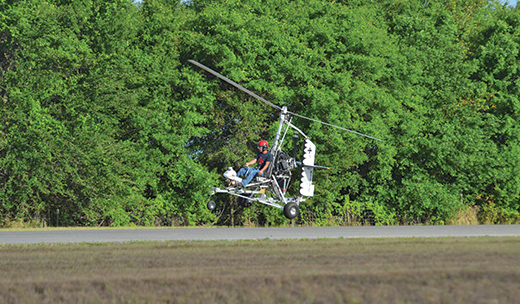
Would a path to SLSA status for gyroplanes spur growth in the category? It very well might, the author believes.
The Next Step
There may be something more in the meat of the entire report that justifies some of its recommendations. Even so, the FAA doesn’t just rubber stamp NTSB reports and make them the law of the land. However, the good in the report should be found and focused on by the appropriate people in the EAA, the Popular Rotorcraft Association (PRA) and the United States Ultralight Association (USUA). There are recommendations that are useful, especially if they are modified a little with some real-world accommodations. Having those NTSB recommendations in hand can be a powerful tool when advocating for safer gyroplanes and other aircraft.
Editor’s note: The full NTSB report is now available and can be found at http://go.usa.gov/fmf.

![]()
Roy Beisswenger is the technical editor for Powered Sport Flying magazine (www.psfmagazine.com) and host of the Powered Sport Flying Radio Show (www.psfradio.com). He is also a Light Sport repairman and gold seal flight instructor for Light Sport Aircraft as well as the United States delegate to CIMA, the committee of the Fédération Aéronautique Internationale (FAI) pertaining to microlight activity around the world.

